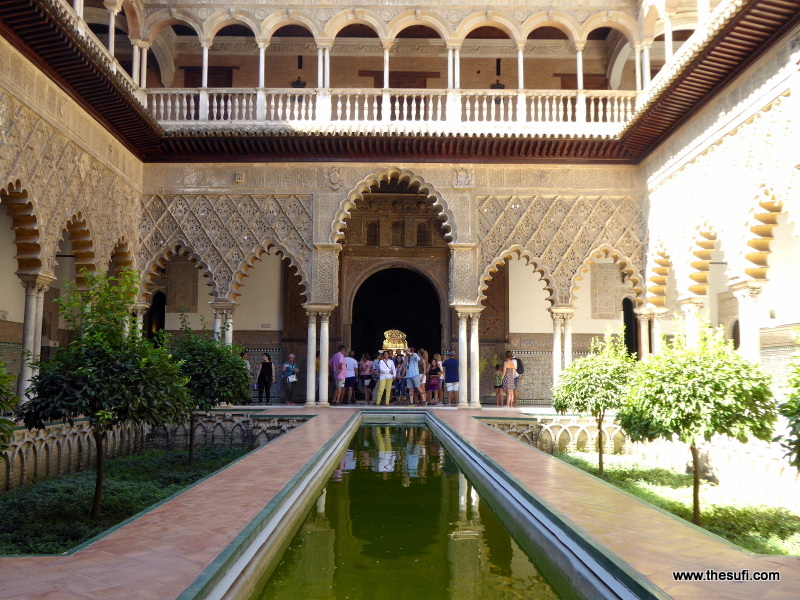Alcazar of Seville, Andalucia Spain
The Alcazar of Seville, with a history stretching back more than a thousand years, is one of the most complex and important buildings in the world; the diversity and uniqueness of its almost-labyrinthine rooms are of extraordinary value. With every step, we are taken to key moments in Spanish history: the arrival of the Taifa kings, the Almohad Caliphate, the Castilian transformation, etc. The steps of such singular characters such as Al-Mutamid, Ferdinand III “The Saint”, Peter I “The Just”, Isabella of Castille, or Emperor Charles can still be heard echoing through its spaces.
The history of the Islamic palace is that of the city itself: a dynamic city that grew in size along with its political influence and architectural wealth. Currently, a large portion of its walls and palaces are still standing, albeit disguised or altered by the different powers that have inhabited its rooms since the Castilian conquest. The walls that surround the Patio de Banderas, its original door, the Palacio del Yeso and a large part of the Patio del Crueero belong to the Islamic period.
Starting in the 13th century, the Castilians adapted to the royal life of-the palac^- Transforming thj| meaning and purposes of the different spaces. Firstly, they chose to superimpose, upon what had been the most Important of the Almohad palaces, a building emblematic for its quality and symbolism. The Palacio Gotico represented the drastic transition of the new Christian order, but the rest of the buildings belonging to the Islamic citadel continued to be inhabited with few alterations to their structure for a century after the conquest.
Archaeological excavations have revealed both processes, nevertheless showing the spectacular change set into motion by King Peter I starting in 1356, which meant the definitive disappearance of the Almohad interior layout of the central area of the complex. It is the Palacio Mudgjar that serves as the heart of the current palace, its most precious jewel, a faithful witness to ah age of splendour, with a mix of cultures and personality like few others in our history.
But the Alcazar cannot be understood without its gardens whose diversity and harmony give testimony to the splendour of Seville beginning in the Renaissance. Facing the grand Palacio Gotico and Palacio Mudejar, the Italian Renaissance gardens of Las Damas, La Danza, Troya, Galera and Flores extend southwards in an ordered fashion, under the protection of the Ahnohad wall. Flanking them to the east and west, respectively, are the gardens of Jardin del Marques




